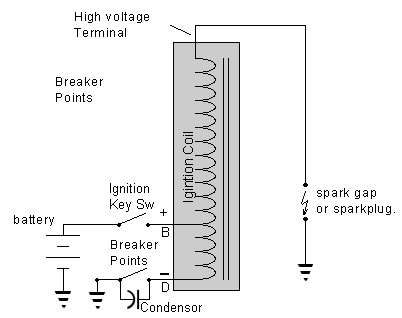I know that my coil is not properly connected, but I am confused by the many different wiring diagrams I have. We are working on a 1960 tbird.
I am using reproduction wiring harnesses that matched the orig. harnesses. With one exception; the pink resister wire is replaced with a pink non-resister wire. Please note that I do not have an overdrive solenoid - I am working with a 352 and Cruise-o-matic.
When attempting to start the engine I do not have a spark.
At the coil I have a black wire connected to the neg side of the battery that comes from the distributor. I have a red/green wire that runs back to the firewall. At the firewall the red/green is joined by a brown wire that comes from the starter solenoid and both connect to a pink wire that runs through the firewall.
There is a pink wire connected to the ignition switch.I have not yet check for continuity to the pink wire at the firewall; however I assuming is is the same until I can ohm the wire. I am not sure it is connected to the correct post. Does anyone have a picture of the back of the ignition switch that shows where the pink wire should connect?
I've added a diagram modified to show how my wiring attaches.
Thanks for you help. Maybe I can fire her up this weekend.
Kevin
I am using reproduction wiring harnesses that matched the orig. harnesses. With one exception; the pink resister wire is replaced with a pink non-resister wire. Please note that I do not have an overdrive solenoid - I am working with a 352 and Cruise-o-matic.
When attempting to start the engine I do not have a spark.
At the coil I have a black wire connected to the neg side of the battery that comes from the distributor. I have a red/green wire that runs back to the firewall. At the firewall the red/green is joined by a brown wire that comes from the starter solenoid and both connect to a pink wire that runs through the firewall.
There is a pink wire connected to the ignition switch.I have not yet check for continuity to the pink wire at the firewall; however I assuming is is the same until I can ohm the wire. I am not sure it is connected to the correct post. Does anyone have a picture of the back of the ignition switch that shows where the pink wire should connect?
I've added a diagram modified to show how my wiring attaches.
Thanks for you help. Maybe I can fire her up this weekend.
Kevin






 . I don't think the points are closing tightly. After sitting 5 years maybe the grease has hardened up. I'll look at that tonight and test the condenser.
. I don't think the points are closing tightly. After sitting 5 years maybe the grease has hardened up. I'll look at that tonight and test the condenser.
Comment